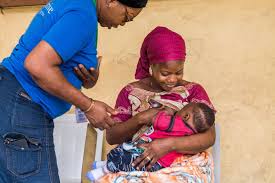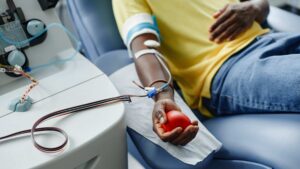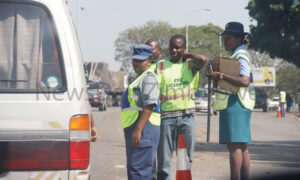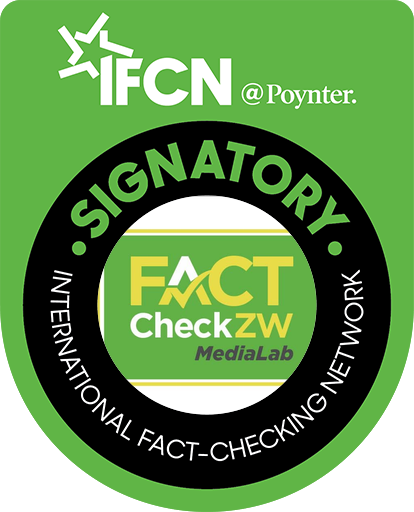In 2020, Zimbabwe had 10 339 cancer cases in females. Of these, 29,4% were cervical and 17,9% breast. The month of October is Breast Cancer Awareness Month and here is a fact sheet on breast cancer.
What is Breast Cancer
Breast cancer is an uncontrolled growth of breast cells. Except for skin cancer, breast cancer is the most common cancer in women around the world.
Are there different kinds of breast cancer?
There are many types of breast cancer. Some are very rare. Your doctor can tell you more about the type you have. Below are the medical names for the most common types of breast cancer. (Carcinoma is another name for cancer.)
Ductal carcinoma in situ or DCIS
DCIS is very early breast cancer. In DCIS, the cancer cells are only inside the milk ducts. (Ducts are the tiny tubes that carry milk to the nipple). The cancer cells have not spread through the walls of the ducts into the nearby breast tissue. Nearly all women with DCIS can be cured.
Invasive breast cancer
Invasive breast cancer means the cancer has grown outside the place it started (for example, a milk duct or milk gland) and is invading (growing into) nearby breast tissue. These cancers might also spread to other places in the body. Most invasive breast cancers are one of these types:
Invasive ductal carcinoma (IDC): This is the most common type of breast cancer. It starts in a milk duct of the breast and grows through the wall of the duct into the nearby breast tissue.
Invasive lobular carcinoma (ILC): This type of cancer starts in the milk glands, called lobules, and grows into the nearby breast tissue.
Inflammatory breast cancer (IBC)
In IBC, cancer cells block lymph vessels in the skin. IBC makes the skin of the breast look red and feel warm. The skin can also look thick and pitted – kind of like an orange peel. The breast may get bigger, harder, tender, or itchy. Many times there’s no lump felt with IBC.
Because there’s no lump, IBC might not show up on a mammogram. This can make it harder to find IBC early. It’s more likely to spread and is harder to cure than invasive ductal or lobular cancer.
Triple-negative breast cancer (TNBC)
TNBC is invasive breast cancer that certain types of treatment won’t work on. It’s called triple-negative because the cancer cells are missing three kinds of proteins that breast cancers are tested for: estrogen and progesterone receptors (proteins that help cells respond to hormones), and another protein called HER2 (a protein that other types of breast cancer make too much of). When a breast cancer tests negative for all three of these proteins, it means the cancer might be harder to treat because there are fewer treatment options.
What are the symptoms of Breast Cancer
Different people have different symptoms of breast cancer. Some people do not have symptoms at all. Some warning signs of breast cancer are:
- New lump in the breast or underarm (armpit)
- Pain in any area of the breast
- Any change in the size or shape of the breast
- Irritation or dimpling of breast skin
- Thickening or swelling of part of the breast
These symptoms are not all synonymous with breast cancer, they can happen with other conditions that are not cancer.
Risk factors
A risk factor is any factor that is associated with an increased chance of developing a particular health condition such as breast cancer. There are different types of risk factors, some of which can be changed and some which cannot.
It should be pointed out that having one or more risk factors does not mean a person will develop breast cancer. Many people will have at least one risk factor but will never develop breast cancer.
While the causes of breast cancer are not fully understood, there are a number of factors associated with the risk of developing the disease. Some of the risk factors include;
- Being a woman
- Increasing age
- Having a strong family history of breast cancer
- A number of hormonal factors, personal and lifestyle factors
- Race/ethnicity
How is Breast Cancer diagnosed
A change seen on your mammogram may be the first sign of breast cancer. Or you may have found a lump or other change in your breast.
The doctor will ask you questions about your health and will examine you. A breast exam is done, which includes looking for changes in the nipples or the skin of your breasts. The doctor will also check the lymph nodes under your arm and above your collarbone. Swollen or hard lymph nodes might mean breast cancer has spread there.
If signs are pointing to breast cancer, you will have more tests. Here are some of the tests you may need:
Mammogram: This is an x-ray of the breast. Mammograms are mostly used to find breast cancer early. But you might have another mammogram to look more closely at the breast problem you could have.
MRI scan: MRIs use radio waves and strong magnets instead of x-rays to make detailed pictures. MRIs can be used to learn more about the size of the cancer and look for other tumors in the breast.
Breast ultrasound: For this test, a small wand-like instrument is moved around on your breast. It gives off sound waves and picks up the echoes as they bounce off tissues. The echoes are made into a picture on a computer screen. Ultrasound can help the doctor see if a lump is a fluid-filled cyst (which is not likely to be cancer), or if it’s a solid mass that could be cancer.
Getting a breast biopsy
In a breast biopsy, the doctor takes out small pieces of breast tissue to check them for cancer cells. A biopsy is the only way to tell for sure if you have breast cancer.
There are many types of biopsies. Ask your doctor what kind you will need. Each type has risks and benefits. The choice of which type to use depends on your case.
Sometimes, surgery is needed to take out all or part of the lump to find out if it’s cancer. This is often done in a hospital. You will be given local anesthesia (numbing medicine) and you might be given medicine to make you sleepy.
Tests to look for breast cancer spread
If breast cancer is found, you might have other tests, such as a CT (CAT) scan, PET scan, or bone scan to look for cancer spread. But not all women with breast cancer need these tests.
What kind of treatment will you need?
There are many ways to treat breast cancer.
Surgery and radiation are used to treat cancer in a specific part of the body (such as the breast). They do not affect the rest of the body.
Chemotherapy (chemo), hormone treatment, targeted therapy, and immunotherapy drugs can reach cancer cells almost anywhere in the body.
Doctors often use more than one treatment for breast cancer. The treatment plan that’s best for you will depend on:
- The cancer’s stage and grade (how much the cancer cells look like normal cells)
- If the cancer has specific proteins, like the HER2 protein or hormone receptors, or certain gene changes
- The chance that a type of treatment will cure the cancer or help in some way
- Your age
- Any other health problems you have
- Your feelings about the treatment and the side effects that come with it
Surgery for breast cancer
Most women with breast cancer have some type of surgery. Common types of breast surgery are lumpectomy, mastectomy, and taking out lymph nodes from the underarm. Women who have breast surgery may also decide to have the breast shape rebuilt, either at the same time or later on. This is called breast reconstruction.
Adopted from: https://www.cancer.org/cancer/breast-cancer/if-you-have-breast-cancer.html











